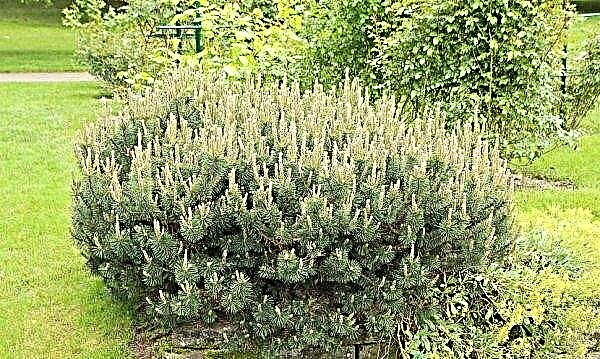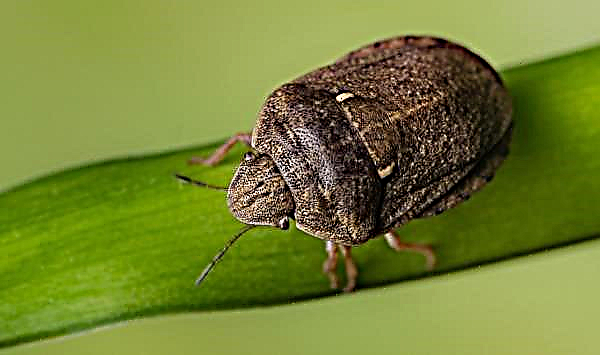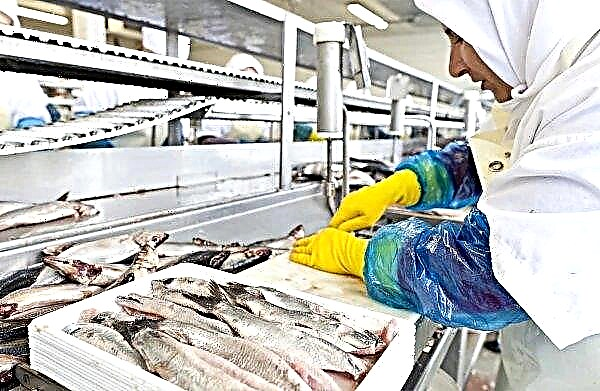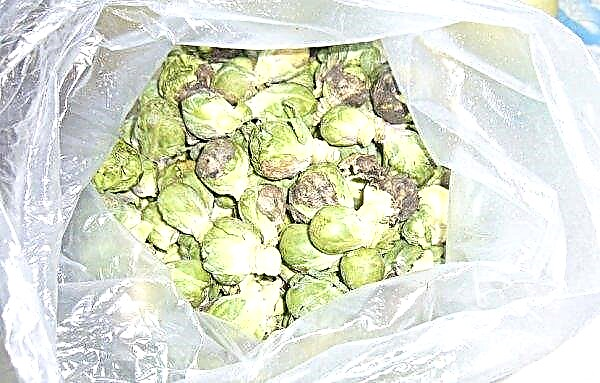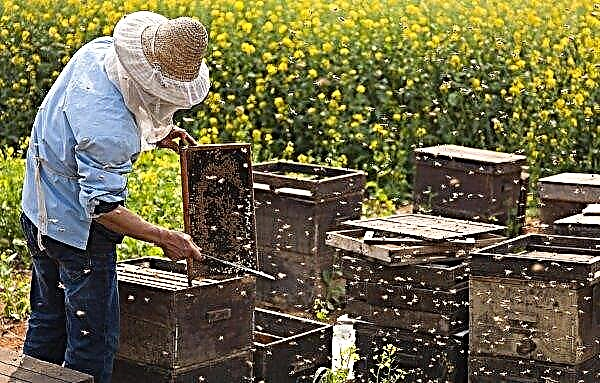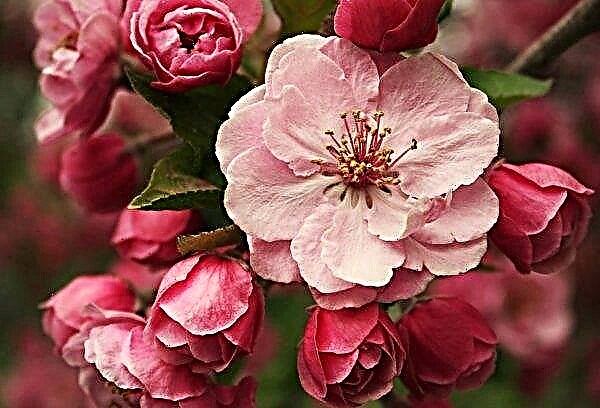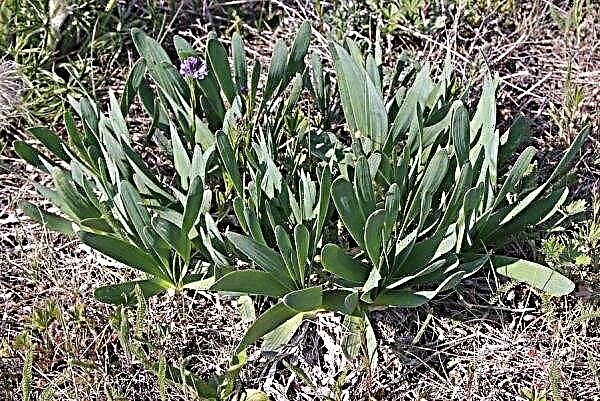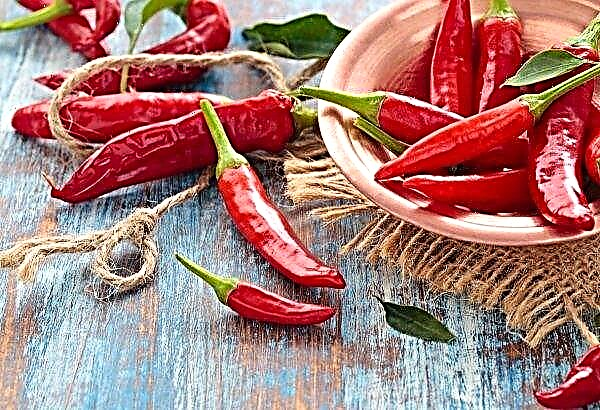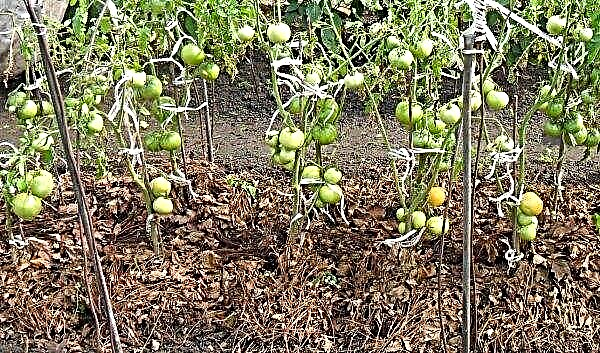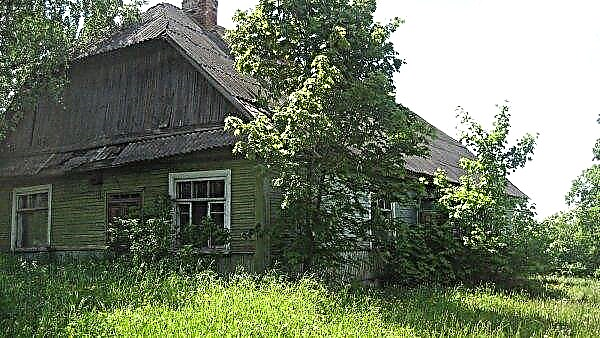San Andreas (San Andreas) - an evergreen variety of strawberries of California origin, intended for cultivation in a greenhouse. It differs from other similar varieties by its incredibly tasty, large berries with a bright taste and aroma. Read about the features of the variety and how to grow it in the review.
Selection history
The botanical name of the plant is Strawberry Sadovaya (Pineapple) (Fragaria × ananassa Duch). The name of the variety is San Andreas. Obtained by crossing the Albion variety and the Cal 97.86-1 form in the experimental garden of the University of California in 2001. Propagated by antennae.
The variety is remontant, belongs to the evergreen. It is similar to a Diamond, but has a higher yield, quality low-lying fruits and disease resistance. Designed for cultivation in the subtropical zone, therefore, in a temperate climate it can grow only in greenhouses.

The variety is fully certified for cultivation in the United States and Canada since 2009. Variety testing conducted in 2005. San Andreas is actively sold in the European berry market. In the CIS, it is registered in the State Register of Belarus.
Did you know? Strawberry — the only fruit whose seeds are outside. One berry — carrier of about 200 seeds. But, nevertheless, these seeds are barren and the plant propagates vegetatively (in its parts).
It shows good productivity in the climate of this country, including in the open ground. San Andreas is not declared in the State Register of Russia, but is widely used by gardeners. The high yield and commercial properties of berries make it extremely popular. The variety produces 99% of Class I berries.
Features and characteristics of the variety
The bush is large, developed, but at the same time very compact. Leaves are slightly longer than usual and less round, convex. This length is achieved due to the longer petioles. They are quite thin and tend to be very pubescent. The surface of the sheet plate is darker than that of the standard, grade Diamond.

Stipules pinkish-green, medium size. Peduncles are quite large. The flowers are bisexual, white, with overlapping petals. Inflorescences are medium-flowered, compact. The root system is fibrous, well developed.
It is characterized by moderate resistance to powdery mildew, anthracnose, verticillin wilt, late blight and spotting. The variety is also resistant to infection by spider mites.
The berries are dense, conical in shape with a rounded tip. The surface is shiny, bright red. Inside the berry is pale red with transparent veins. The pulp is juicy. When re-poured completely retains its shape and does not soften. The taste is sweet and sour. Tasting assessment of berries - 4.3–4.5 points out of 5.
Video: Strawberry San Andreas
Drought and frost resistance
California San Andreas for subtropical climatetherefore it is not winter hardy. The root system of any varieties is in the upper 7-10 cm of soil, therefore, it needs frequent watering. Despite the fact that San Andreas has strong roots and can tolerate drought, keep in mind that watering still affects the weight and taste of berries.
Productivity and fruiting
Flowering and ripening of fruits do not depend on the length of the color day, so San Andreas shows a consistently high yield. Flowering begins in May. By maturity, it is considered mid-early.
Important! When laying the beds, note that the bushes can bloom in 2 months. Such flowers must be removed so that the next peak yield is more abundant and simultaneous.
5-7 weeks after flowering, the first crop ripens. And in greenhouses you can get a harvest by the beginning of April. 2 main peaks are characteristic for fruiting, but it can continue from early June to mid-autumn. The interval between peaks of fruiting is 4 weeks.
The average weight of berries reaches 30 g. The maximum weight is 60 g. The yield of one bush reaches 0.7–1.0 kg. The fruiting of San Andreas is stable and remains so for 3-4 years of commercial use.

Scope of berries
San Andreas is a universal variety. Its fruits perfectly tolerate transportation and storage. They can be used both fresh and processed for winter harvesting. The high density of the pulp allows them to maintain their shape even during heat treatment.
Advantages and disadvantages of the variety
- Grade advantages:
- long fruiting period;
- high productivity;
- large berries;
- high organoleptic properties;
- good storage and transportability;
- disease resistance.
The disadvantage or feature of the variety is that it is not intended for temperate climates. Therefore, it is recommended to grow it in greenhouses.
Landing Features
Strawberries are relatively easy to grow. She feels equally well in a limited space and in a large territory. Caring for it does not require special equipment. A huge advantage in growing is that the bushes can grow and bear fruit for several years after planting. With proper care, you will be provided with more than 700 g of berries from each bush annually.

The successful strawberry growing cycle includes:
- acquisition of high-quality planting material;
- choice of landing place;
- choice of landing system;
- preparation of the selected landing site;
- planting;
- creation of favorable conditions;
- care for growing strawberries;
- berry harvesting;
- updating of berry beds;
- control of plant safety during the winter months.
Important! Repairing strawberry varieties require updating after 3 years due to the fact that the berries of subsequent years become smaller and yield decreases.
Planting requires healthy plants, with no signs of disease. It is most reliable to purchase varietal strawberries in a nursery. After opening the package, inspect the plants. If there is mold, they should be returned back.

If you can’t plant the bushes right away, wrap the roots with wet paper towels, put them in a bag and store in the refrigerator until planting. Planting plants should be on a cloudy day or in the late afternoon.
Recommended Dates
Planting time almost always depends on climatic conditions. In the open ground, bushes can be planted in the south. As soon as the soil dries, usually in March or April, they begin to plant strawberries.
Plants should be well developed by the time the thermometer reaches + 22 ° C. In a greenhouse, strawberries can grow year-round, so planting is carried out at any time - both in spring and autumn.
Choosing a place and planting material
Choosing a place to promote strawberries is the next important step. In open ground, the needs of berries in bright sunlight should be taken into account - at least 6 hours a day. Shadow from tall trees should not fall on the site. In addition, the root system must not compete for nutrients with the roots of trees or shrubs.

Of all soil types, strawberries prefer sandy loam. It contains a sufficient amount of organic substances. But even if you don’t have a good site, you can always add organics when planting. This can be compost, peat moss, as well as sand for loose soil.
If over the past three years, crops having the same pests with plants of the genus Strawberry were grown in the same plot, then this plot is not suitable for planting. Unsuitable precursors include tomatoes, potatoes, eggplant, peppers and strawberries. It is also undesirable to use a plot on which melons, mint, blackberry bushes, stone fruits, chrysanthemums and roses have been growing for 5 previous years.
Did you know? In France, strawberries are considered an aphrodisiac. It is served to the newlyweds at traditional wedding breakfasts in the form of a creamy-sweet soup.
The site should be well drained. Although plants need constant moisture, they will begin to rot if the moisture stagnates. In areas with poor drainage, raised beds are used.
In the greenhouse, planting is carried out:
- into the ground;
- in raised beds - their height should be at least 25 cm, and good drainage is definitely needed in the lower part;
- into containers, where each plant is allocated a zone with a diameter of 20 cm

Planting technology depends on the type of soil. All strawberry varieties do not tolerate drought very well, so try to maintain water balance when growing, both in the ground and in the greenhouse.
Before planting, the site must be cleaned of weeds and dug. Digging is carried out to a depth of 20-30 cm. Make sure that the groundwater level does not rise above 70 cm from the soil surface. Also do not use sloping areas. After rains and snow melt, soil erosion will occur there faster, which is bad for the root system.
Landing algorithm
Organic matter must be added to the soil. It can be rotted manure, peat or humus. The application rate is 1 bucket per 1 m² of soil. On dense soils, sand is added to make them looser.
Landing Algorithm:
- If planting is carried out in the beds, then the distance between the plants is about 20 cm, and between the beds - 30 cm. The depth of the holes is 25 cm.
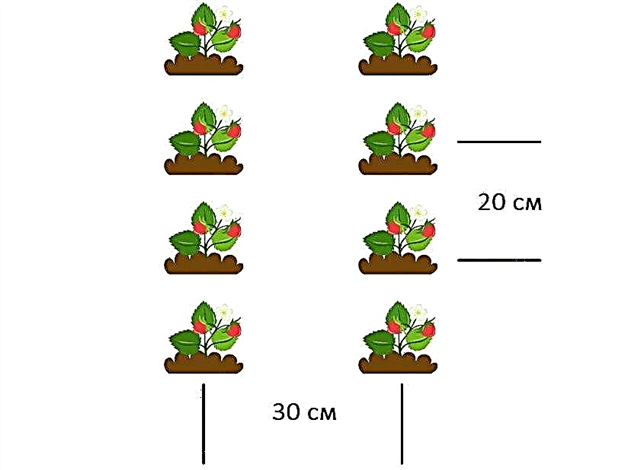
- The hole is abundantly watered.
- The roots are treated with a disinfecting solution. It can be both industrial preparations of the Fitoferm type, and folk remedies - a decoction of garlic.
- Each outlet at the time of planting should have no more than 4 leaves. This is important, as an unrooted plant will not be able to maintain a large mass of foliage and may die. The root length is about 10 cm.
- When placing in a hole, straighten the roots.
- Gently sprinkle them with earth.
- Make sure the growth point is above ground.
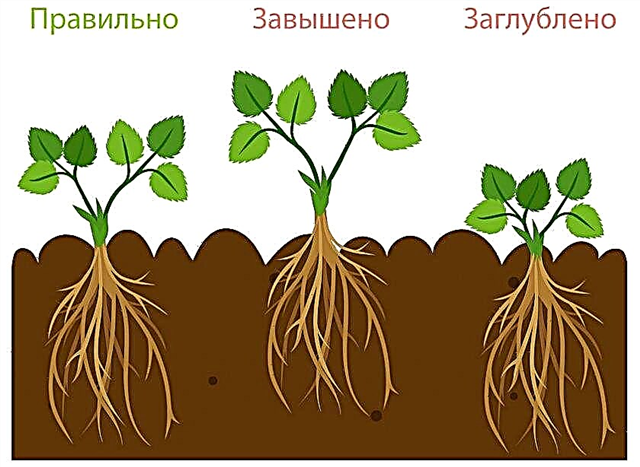
Important!Too small a planting can cause the roots to dry out before they begin to grow, and too deep will cause the root neck to rot and the socket will die.
Subsequent Strawberry Care
When plants are planted, it is important to create an environment that is most favorable for growing. First of all, to preserve moisture, mulch the bed. You can use straw or sawdust - they will prevent the berries from contacting with moisture and fungi from the soil, and will also protect against weed growth and pests.
Pine needles are also a good choice. They slightly increase the acidity of the soil as it decomposes. Mulching reduces soil temperature, inhibits weed growth, retains moisture in the soil, and berries from dirt. Most varieties bear fruit better at lower soil temperatures.

All varieties of strawberries will be better to bear fruit in subsequent years, if their strength in the first year will be directed to the rooting and development of healthy shoots. Therefore, in the first year, all flowers must be removed.
Growing strawberries requires constantly moist soil, so regular watering is necessary. Type of irrigation - root or sprinkling. They start it in the spring, and finish in September; this will allow the plant not only to give a good harvest, but also to lay a lot of flower buds for next year.
The best type of fertilizer is balanced. In them, the ratio of parts of nitrogen, phosphorus and potassium should be the same. For example, 10 × 10 × 10 (%). It is advisable to introduce radical top dressing when active vegetative growth occurs. Fertilizing helps to get the maximum yield. Feeding on wet berries can enhance phytotoxicity, so feed strictly under the root and only in dry weather.

Winter preparations
Protecting strawberries from low winter temperatures is vital for harvesting next year. There are several reasons for this. Firstly, temperatures below 0 ° C can damage flower buds.
And secondly, the soil, which thaws and freezes in cycles when the temperature changes, pushes plants up from the ground, which can break the roots. Insulation of the site solves this problem. Warming the bushes is not at all difficult.

Useful tips for plantation warming:
- When the soil freezes, apply a layer of mulch around the plants. Sawdust, spruce branches or straw are suitable. If you put the mulch too early, the roots will rot in a damp environment, and if it's too late, the thaw will have time to damage them. Also note that the thickness of the layer should not exceed 7 cm, so that the soil can "breathe" during the thaw and give off excess moisture.
- In areas with mild winters, apply mulch as soon as the soil temperature reaches + 4 ° C for 3 consecutive days.
- Prepare the plants for wintering before the temperature drops to -6 ° C.
- Mulch material should not shrink during frost. A good material is straw, ears of corn. Hay or grass is not an excellent choice, as they become a source for the development of weeds.
- Remove the mulch in the spring when growth resumes.
- If plants outside grow in containers, just bring them into an unheated garage or basement.
Diseases and pests, methods of control and prevention
Strawberries are liked not only by people, but also by many insects, as well as birds. And if you can protect crops from birds using a net, then they are protected from insects by spraying with insecticides or using organic methods of control. Check the plants once a week to notice the appearance of aphids or slugs in time.
The main pests:
- Weevil - a small bug of bronze color. Damages the strawberry buds, which leads to their falling. One bug is enough to destroy 50 ovaries. To combat it, the drug Namabact or Intra-vir is used at the time of flowering.

- Strawberry leaf beetle - a beautiful beetle of rounded shape and dark chestnut color. It affects the leaves, leaving many small holes and deformed edges of the leaf plate. To destroy the beetle use "Karbofos", "Metaphos".

- Maybug Larvae (Khrushchev) damage the underground part of the plant. Use Aktaru, Zolon, or Bazudin to destroy.
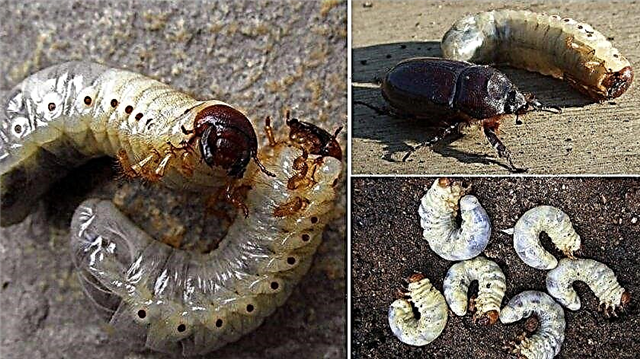
- Strawberry mite damages leaves, resulting in wrinkling and fading. For treatment, spraying with a solution of colloidal sulfur is used.
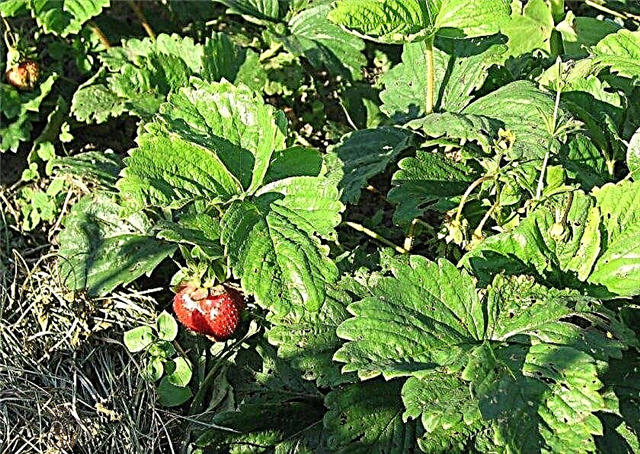
- Aphid - A widespread pest of gardens. These are small insects that damage leaves and leave a sticky coating on them. Against aphids, spraying crops with a solution of insecticidal soap is used.

- Thrips - small insects of brown or black color with small wings. The result of their activity is damage to the sheet plate of the sheet with subsequent wilting and falling. To destroy them, you can also apply spraying with a solution of insecticidal soap.

- Slug appear when air temperature drops and in high humidity. They damage both leaves and berries. Measures to combat them are very diverse: farmers sprinkle row-spacings with broken shells, make ditches with water around the beds, pour phosphorus-potassium fertilizers in the rows, which slugs cannot tolerate.
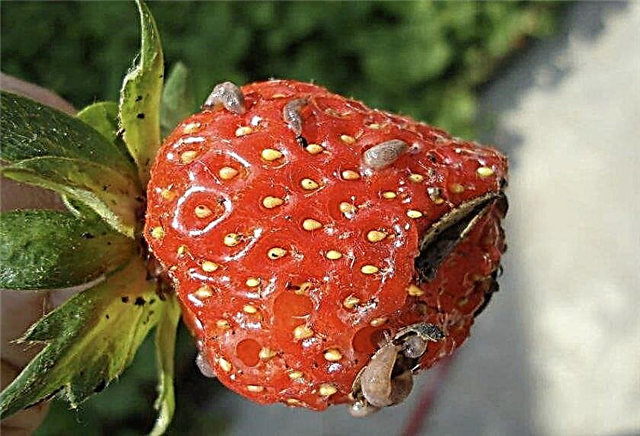
The choice of insect control products always depends on what kind of pest you found. Most often, the choice is stopped on drugs with a wide spectrum of action, which work against many pests at the same time.
Usually, diseases affect strawberries due to non-compliance with the irrigation regime and excessive moisture. Variety San Andreas is declared as resistant to fungal diseases, so there is no need for intensive use of chemicals.
Harvesting and storage
Most berries are left on the plants for one or two days after ripening. It is necessary that they achieve maximum sweetness. Fragile fruits are easily damaged or bruised, so they are picked by hand.Use the thumb and forefinger nails to cut the stem directly above the berry, rather than pulling it towards you.
Carefully support it with your palm so that it does not fall, hit or get dirty. Each berry must have a cap and part of the stem. Those from which they accidentally come off should be consumed first - they cannot be stored for longer than 1-2 days.
 Harvesting can be done daily, as the berries ripen gradually.
Harvesting can be done daily, as the berries ripen gradually.
Harvested strawberries should be dry. Place unwashed berries in a cool, dry, shaded place (best in the refrigerator). It is not recommended to pour them in several layers, so as not to crush the bottom ones - from this the wet fruits will be covered with mold and spoil the whole crop.
Shelf life of fresh strawberries - no more than 5 days in the refrigerator. If you can’t eat it in a few days, it’s better to freeze or prepare it in the form of jam or other desserts for the winter. The variety is commercially viable. It is high-yielding, has a long fruiting period, and its berries are dense enough to tolerate transportation.
Did you know? Studies show that athletes who eat strawberries before training have more stamina and burn more calories.
Strawberries San Andreas does not require special efforts for growing and has a number of obvious advantages for growing in a greenhouse or in the open ground of the southern regions. Use the knowledge gained, and this will help you get a good harvest of berries. Remember to also regularly check for updated articles on various aspects of successfully growing strawberries under different conditions.










